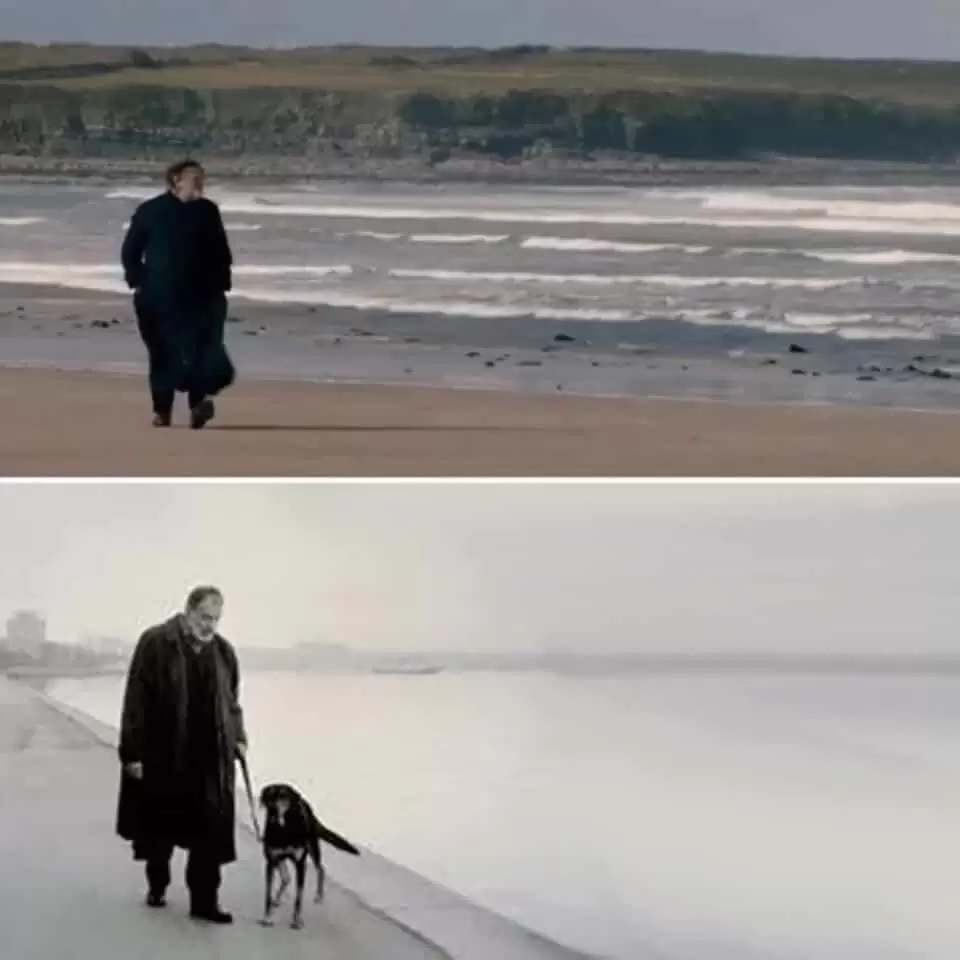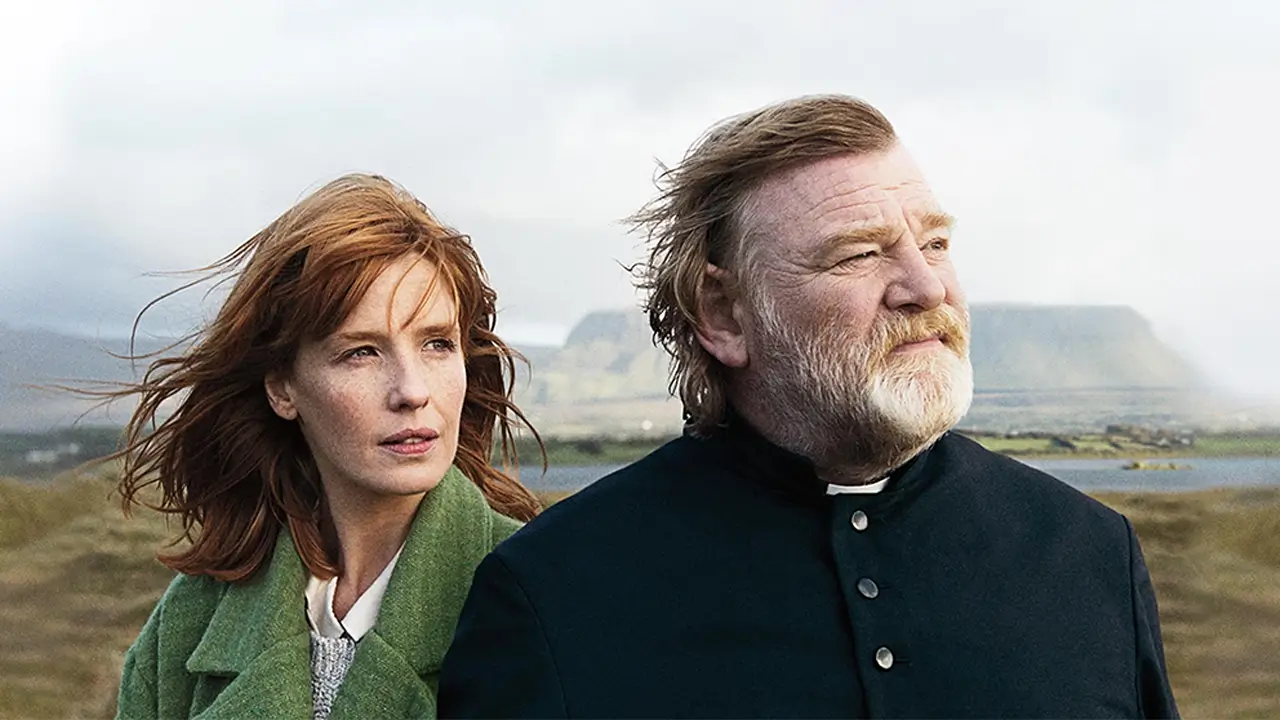Calvary (2014) is a John Michael McDonagh movie.
In traditional community-based societies, clergy who are entrusted with the task of improving individual and collective welfare hold significant importance. From administering confessions to delivering sermons that define the purpose of the community’s existence, these acts grant them a position of reverence in the eyes of the congregation. In such societies, traces of religious life and the influence of clergy can be found across all foundational aspects—cultural, legal, economic, and political. However, over time, as these foundations began to emerge as independent disciplines, such community-based religious structures gradually gave way to secular, society-based formations. [1]
As the idea that societal welfare could be enhanced by maximizing individual benefit [2] was reinterpreted and reshaped by authorities to serve their own agendas, not only did the relations of production change, but so too did the personal and interpersonal patterns of thought that were built upon them. Consequently, the individual’s relationship with themselves and with society morphed into an artificial construct, rather than something naturally existing.
This process, which evolved not unilaterally but through a mutual dialectic, led to the severance of the individual’s natural bonds with the society they were born into—and with their own sense of self. It is in the midst of this painful transformation that we meet James, a selfless priest devoted to the well-being of his community. Tasked with healing the societal dissociation and the symptoms of individual nothingness, meaninglessness, and cynicism, James’s life takes a dramatic turn when he receives a death threat during a confessional session.
On the Meaninglessness of Hope: Calvary
With an opening that recalls films like The Club (2015), Spotlight (2015), and Doubt (2008)—which explore the role of clergy in cases of sexual abuse—Calvary delivers a powerful introduction. During confession, a man recounts the story of being sexually abused at the age of seven. But he does not seek relief from this burden, nor does he hope to ease the struggles of living with it. His only desire is to kill James as retribution for what a priest once did to him.

Following the confessional session, we see that the threat to Father James’s life is not only physical. He also faces the annihilation of his identity as he becomes increasingly alienated from his community. Though the congregation does not hate him, it consists of stereotypical individuals who do not hesitate to speak sarcastically and constantly highlight his perceived social uselessness.
There’s Jack the butcher, who goes on rants about the futility of marriage; a waitress who plans to join the military to compensate for her social awkwardness; James’s anhedonic daughter Fiona, who has lost all hope in life; an elderly writer calmly awaiting death; and Michael, whose narcissism born from wealth outweighs the grief of losing his entire family. To them, Father James means nothing. He even fails to fulfill the basic duties of the church for Brendan, whose bar is about to be repossessed.
“Why don’t you ever talk about the bankers who stripped everyone bare? They’re still evicting people because of unpaid debts. Have you ever heard the Church say anything about it? Aren’t these important issues?””
Calvary
Brendan’s critique reveals a view in which the church-state-bank alliance, as a product of the modern societal order, not only fails to contribute to public welfare but also creates new problems. The silence of religious institutions in the face of these injustices, for Brendan, is deeply troubling. Instead of healing the cancerous institutions we are born into, clergy who ignore such issues in favor of creating a false sense of individual salvation are, in his eyes, not worthy of respect.
Despite all these sentiments, apart from the man who threatened him, no one in the congregation actually has a direct problem with James. Yet as someone who tries to help everyone as much as he can, James finds it a cruel twist of fate that society demands clarity and justice from life as it does from death. Because the fundamental values shaping people’s faith are limited to this expectation and fear of death, losing faith becomes all too easy. And thus, the descent into meaninglessness becomes an abyss for the individual.
Throughout the film, James’s once-passionate desire to live slowly fades. Unable to help his community despite all his efforts, he too is dragged into the swamp of meaninglessness. With his loyal dog, the coastal home that captures the wind’s howls, and his growing emotional disconnection from the world, James closely resembles Alexandros from Eternity and a Day (1998).

Calvary, is a film worth watching, filled with poignant dialogues, striking aphorisms, and emotionally resonant scenes elevated by Patrick Cassidy’s music. It captures the unbearable heaviness of existence, particularly through the story told by Dr. Frank, which poignantly illustrates the fragile line between hope and despair:
“When I got my first job in Dublin, there was a three-year-old boy. His parents brought him to the hospital for a routine operation. But the anesthesiologist made a mistake. The little boy became deaf, dumb and blind. And paralyzed; permanently. Imagine that! Imagine the little boy regaining consciousness. In the dark. You’d be scared, wouldn’t you? You’d be scared, knowing the fear would end. It had to end. It had to end. Your mom and dad had to be close. They would have come to save you. They would turn on the light. They would have talked to you. But think about it. No one is coming to save you. No light is turned on. You’re in the dark. You try to talk but you can’t. You try to move but you can’t move. You try to scream but you can’t hear your own screams. You’re buried inside your own body. Moaning in terror.
Calvary
Further Reading:
[1] According to Tönnies, while the community has “real organic life” and “real, durable means of coexistence” and is “an organism living in itself”, the community, on the other hand, is “a purely mechanical structure existing in the mind”, “a temporary and superficial thing”, “a mechanical aggregation and an artificial phenomenon”.
[2] Aydın, Metin. John Stuart Mill’s Utilitarian Ethics.

